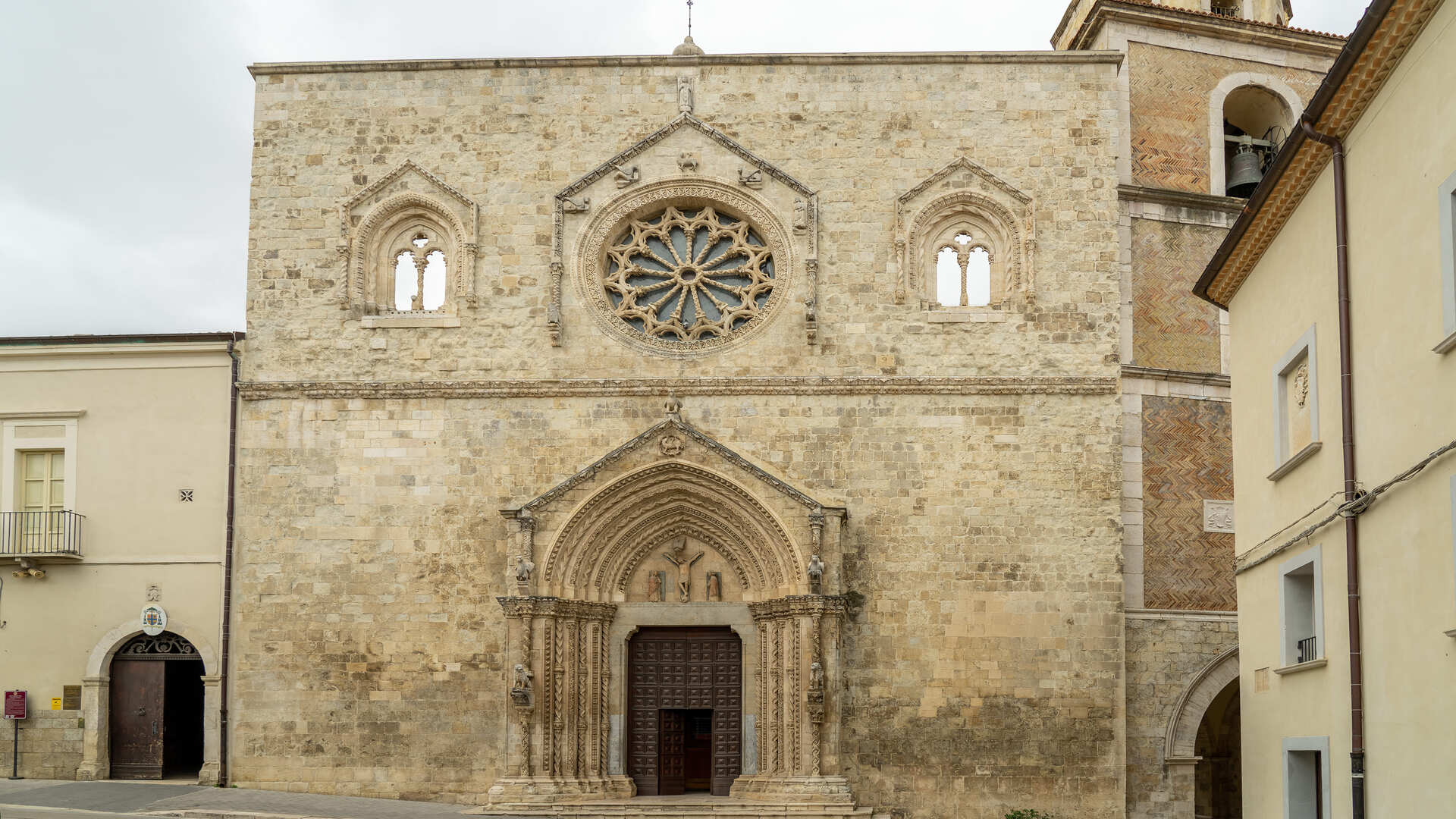The cathedral of Larino, or co-cathedral basilica of Santa Maria Assunta and San Pardo, is one of the most important works of art of the Romanesque style in southern Italy. The foundation of the church dates back to the thirteenth century, built on a pre-existing temple, on the entrance portal a plaque shows the date of its consecration, July 30, 1319.
Towards the end of the eleventh century had already existed a church dedicated to the Holy Bishop of Larino, which was located in a district outside the town, as attested by an act of donation made (of 1081) by such Luffrido, Priest of Larino, in favor of the Monastery of San Giovanni in Venere. In this act were included some lands and small churches built near the church dedicated to it.
In the fourteenth century were made the frescoes of the ceiling, walls and pillars.
In the fifteenth century was realized the altar, in the right aisle, which housed the relics of San Pardo.
In 1451 it was realized, by the master Giovanni di Casalbore of Avellino, the bell tower.
In 1656 the town was hit by the plague, the survivors were forced to face long periods of poverty, Bishop Catalani embellished the church with precious objects and a statue depicting St. Pardo, now stolen.
Bishop Giovanni Andrea Tria was among those who made major changes to the appearance of the Cathedral, the work changed the original architectural features of the cathedral, from medieval to baroque.
In the nineteenth century, the bishop Francesco Giampaolo was the promoter of many works that led to the enhancement of the original aspects of the Cathedral.
In June 1928 Pope Pius XI elevated the cathedral to the dignity of a minor basilica.
Since 1931, restoration works have been carried out in the church, consolidating its structure, including the bell tower, destroyed by lightning in 1943.
18 I Luoghi della fede - CATTEDRALE DI SAN PARDO
Back 18 I Luoghi della fede - CATTEDRALE DI SAN PARDO

